Collective Molecular Activities of the Plant: Gardenia Thailandica
Plant ID: NPO25423
Plant Latin Name: Gardenia Thailandica
Taxonomy Genus: Gardenia
Taxonomy Family: Rubiaceae
Plant External Links:
NCBI TaxonomyDB:
1233871
Plant-of-the-World-Online:
n.a.
Country/Region:
ChinaTraditional Medicine System:
TCMChina
Overview of Ingredients
14 All known Ingredients in Total
Unique ingredients have been isolated from this plant.Plant-Ingredients Associations were manually curated from publications or collected from other databases.
9 Ingredients with Acceptable Bioavailablity
Unique ingredients exhibit acceptable human oral bioavailablity, according to the criteria of SwissADME [PMID: 28256516] and HobPre [PMID: 34991690]. The criteria details:SwissADME: six descriptors are used by SwissADME to evaluate the oral bioavailability of a natural product:
☑ LIPO(Lipophility): -0.7 < XLOGP3 < +5.0
☑ SIZE: 150g/mol < MW < 500g/mol
☑ POLAR(Polarity): 20Ų < TPSA < 130Ų
☑ INSOLU(Insolubility): -6 < Log S (ESOL) < 0
☑ INSATU(Insaturation): 0.25 < Fraction Csp3 < 1
☑ FLEX(Flexibility): 0 < Num. rotatable bonds < 9
If 6 descriptors of a natural plant satisfy the above rules, it will be labeled high HOB.
HobPre: A natural plant ingredient with HobPre score >0.5 is labeled high human oral availability (HOB)
6 Ingredients with experimental-derived Activity
Unique ingredients have activity data available.Ingredient Structrual Cards

Ingredient ID: NPC95914

Ingredient ID: NPC67796
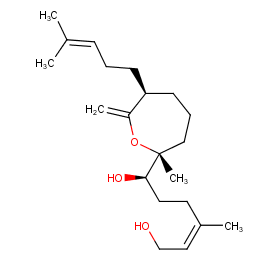
Ingredient ID: NPC48354
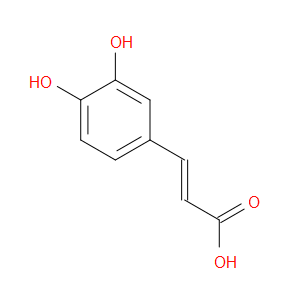
Ingredient ID: NPC294902
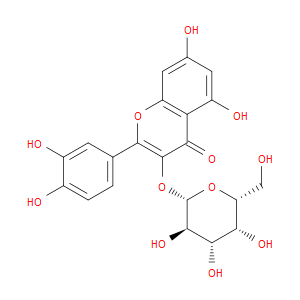
Ingredient ID: NPC281131
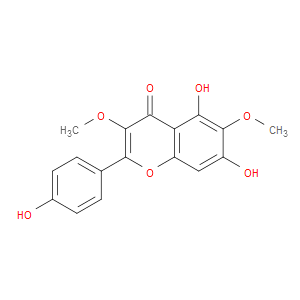
Ingredient ID: NPC266960
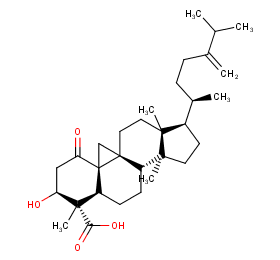
Ingredient ID: NPC266431
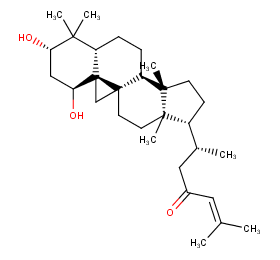
Ingredient ID: NPC264213
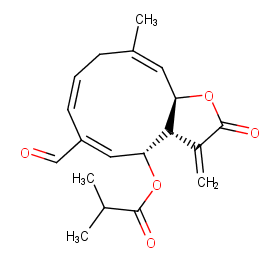
Ingredient ID: NPC244694

Ingredient ID: NPC222768

Ingredient ID: NPC20791
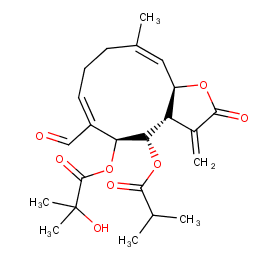
Ingredient ID: NPC187671
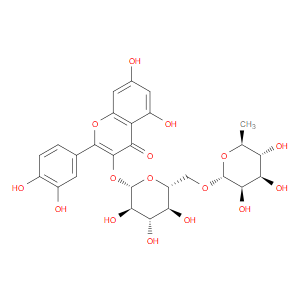
Ingredient ID: NPC176740

Ingredient ID: NPC137240
Classification of Human Proteins Collectively Targeted by the Plant
Detailed Information of Target Proteins
| Target Type | Protein Class | Gene ID | Protein Name | Uniprot ID | Target ChEMBL ID |
|---|---|---|---|---|---|
| Therapeutic Target | Enzyme | NOX4 | NADPH oxidase 4 | Q9NPH5 | CHEMBL1250375 |
| Therapeutic Target | Enzyme | ALOX12 | Arachidonate 12-lipoxygenase | P18054 | CHEMBL3687 |
| Therapeutic Target | Enzyme | POLB | DNA polymerase beta | P06746 | CHEMBL2392 |
| Therapeutic Target | Hydrolase | ACHE | Acetylcholinesterase | P22303 | CHEMBL220 |
| Therapeutic Target | Metallo protease | MMP1 | Matrix metalloproteinase-1 | P03956 | CHEMBL332 |
| Therapeutic Target | Metallo protease | MMP9 | Matrix metalloproteinase 9 | P14780 | CHEMBL321 |
| Therapeutic Target | Metallo protease | MMP2 | Matrix metalloproteinase-2 | P08253 | CHEMBL333 |
| Therapeutic Target | Oxidoreductase | HSD17B10 | Endoplasmic reticulum-associated amyloid beta-peptide-binding protein | Q99714 | CHEMBL4159 |
| Therapeutic Target | Peptide receptor (family A GPCR) | NPSR1 | Neuropeptide S receptor | Q6W5P4 | CHEMBL5162 |
| Therapeutic Target | Protein Kinase | YES1 | Tyrosine-protein kinase YES | P07947 | CHEMBL2073 |
Clinical trials associated with plant from natural product (NP) & plant level:
| Clinical trials type | Number of clinical trials | |
|---|---|---|
| 24 | ||
| NCT ID | Title | Condition | Form in clinical use | Associated by plant or compound |
|---|---|---|---|---|
| NCT00455416 | Dietary Intervention in Follicular Lymphoma | follicular lymphoma | Quercetin (NPC20791) | |
| NCT01348204 | Nasal Potential Studies Utilizing Cystic Fibrosis Transmembrane Regulator (CFTR) Modulators | cystic fibrosis | Quercetin (NPC20791) | |
| NCT01375101 | Therapeutic Effect of Quercetin and the Current Treatment of Erosive and Atrophic Oral Lichen Planus | oral lichen planus | Quercetin (NPC20791) | |
| NCT01438320 | Q-Trial in Patients With Hepatitis C | chronic hepatitis C virus infection | Quercetin (NPC20791) | |
| NCT01705652 | Study to Assess the Activity of Nexrutine® in Prostate Cancer Patients | prostate cancer | Rutin (NPC176740) | |
| NCT01708278 | Beneficial Effects of Quercetin in Chronic Obstructive Pulmonary Disease (COPD) | chronic obstructive pulmonary disease | Quercetin (NPC20791) | |
| NCT01720147 | Quercetin in Children With Fanconi Anemia; a Pilot Study | Fanconi anemia | Quercetin (NPC20791) | |
| NCT01839344 | Effects of Quercetin on Blood Sugar and Blood Vessel Function in Type 2 Diabetes. | type 2 diabetes mellitus | Quercetin (NPC20791) | |
| NCT01912820 | Effect of Quercetin on Green Tea Polyphenol Uptake in Prostate Tissue From Patients With Prostate Cancer Undergoing Surgery | prostate adenocarcinoma | Quercetin (NPC20791) | |
| NCT02226484 | Can Quercetin Increase Claudin-4 and Improve Esophageal Barrier Function in GERD? | gastroesophageal reflux disease | Quercetin (NPC20791) |
❱❱❱ Associated Human Diseases and Detailed Association Evidence
How do we define the Plant-Targeted Human Disease Association?
Associated human diseases of an individual plant are summurized based on FOUR types of association evidence, these include:
❶ Association by Therapeutic Target: Bioactive protein targets of the plant were defined in "Molecular Targets" section, target-disease associations collected from TTD database were subsequently used to build the associations between the plant and its targeted human diseases.
❷ Association by Disease Gene Reversion: Plant and a specific disease will be associated when >= 1 plant target gene overlaped with disease's DEGs.
❸ Association by Clinical Trials of Plant: Plant and a specific disease will be associated when >= 1 clinical trial (the plant is the intervetion) can be matched in ClinicalTrials.gov database.
❹ Association by Clinical Trials of Plant Ingredients: Plant and a specific disease will be associated when >= 1 clinical trial (the plant ingredient is the intervetion) can be matched in ClinicalTrials.gov database.
Associated Disease of the Plant | Association Type & Detailed Evidence |
|---|---|
Acne vulgarisDisease Category: 14.Diseases of the skinDisease ICD-11 Code: ED80 |
MMP2
|
Acute diabete complicationDisease Category: 05.Endocrine, nutritional or metabolic diseasesDisease ICD-11 Code: 5A2Y |
KDR,AURKB
|
Acute myeloid leukaemiaDisease Category: 02.NeoplasmsDisease ICD-11 Code: 2A60 |
SRC,NFKB1,AURKB,TP53,PIM1,FLT3,AXL
|
Acute/subacute hepatic failureDisease Category: 13.Diseases of the digestive systemDisease ICD-11 Code: DB91 |
NFKB1
|
Adenocarcinoma of bronchus or lungDisease Category: 02.NeoplasmsDisease ICD-11 Code: 2C25.0 |
MMP9,NPSR1,MMP1,AURKB,ACHE,CDK1,XDH
|
Adenocarcinoma of pancreasDisease Category: 02.NeoplasmsDisease ICD-11 Code: 2C10.0 |
POLB,ABCG2,ALOX5,CYP1B1,NPSR1,PIM1,RECQL,MMP1,AXL,AURKB,MET,ACHE,MMP2,XDH,ALOX15
|
Adenocarcinoma of prostateDisease Category: 02.NeoplasmsDisease ICD-11 Code: 2C82.0 |
NOX4,ALOX15
NCT01912820 |
Adenocarcinoma of stomachDisease Category: 02.NeoplasmsDisease ICD-11 Code: 2B72.0 |
MMP9,NPSR1,MMP1,NOX4,AURKB,CYP19A1,MET,CDK1,ALOX15
|
Ageing associated decline in intrinsic capacityDisease Category: 21.Symptoms, signs or clinical findings, not elsewhere classifiedDisease ICD-11 Code: MG2A |
NCT05422885,NCT04946383
|
Alzheimer diseaseDisease Category: 08.Diseases of the nervous systemDisease ICD-11 Code: 8A20 |
MET,ACHE,FLT3,KDR
|

